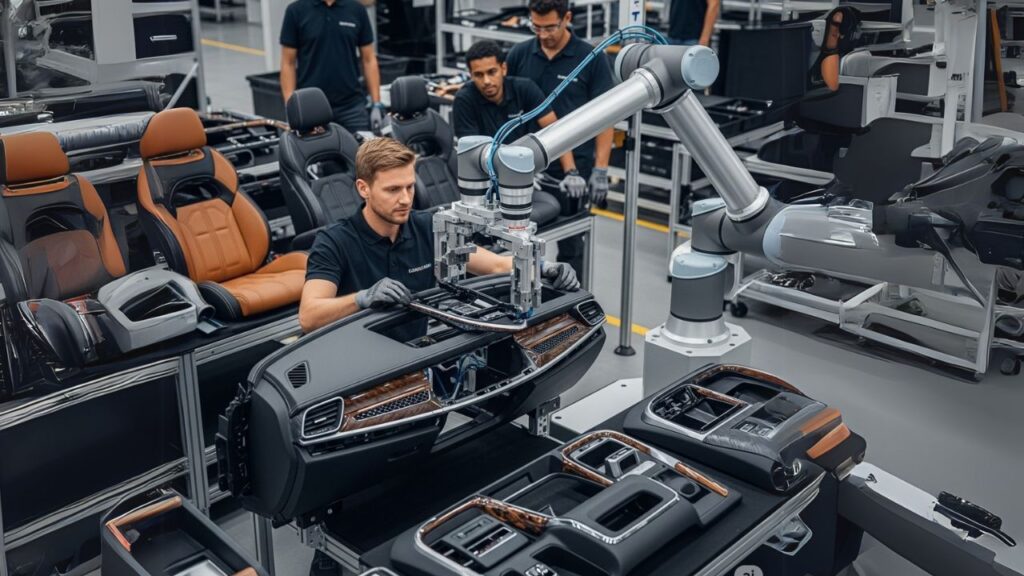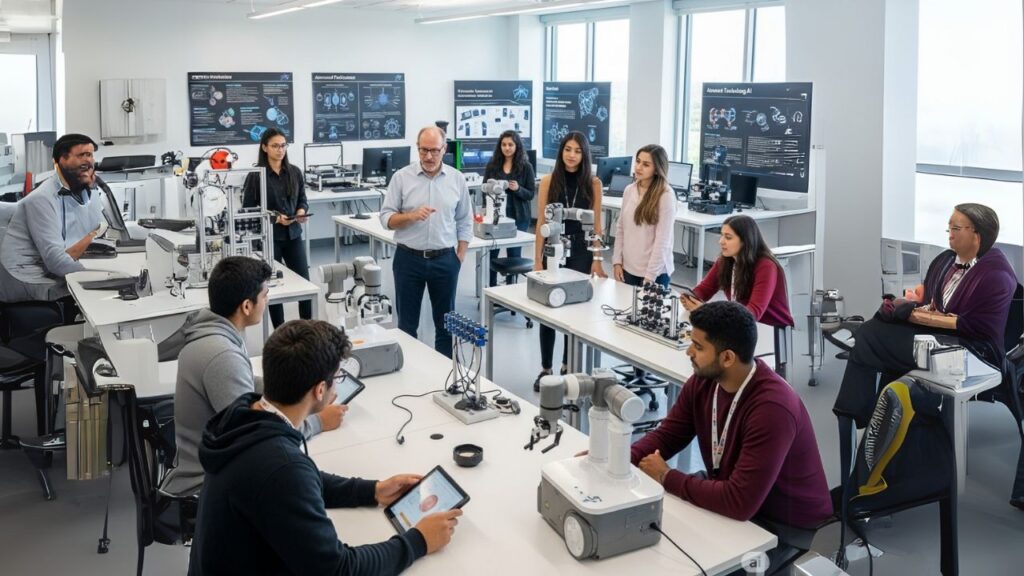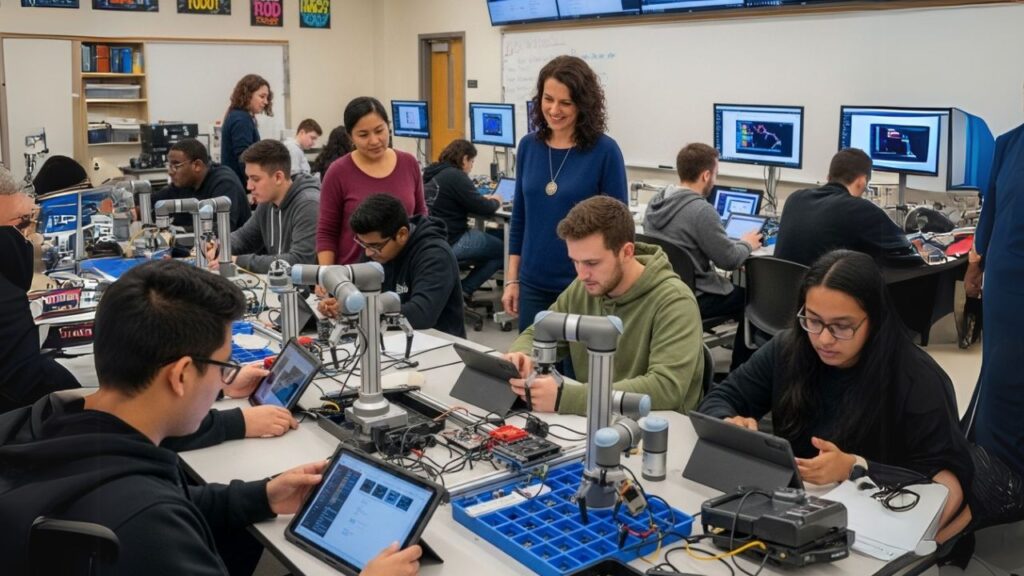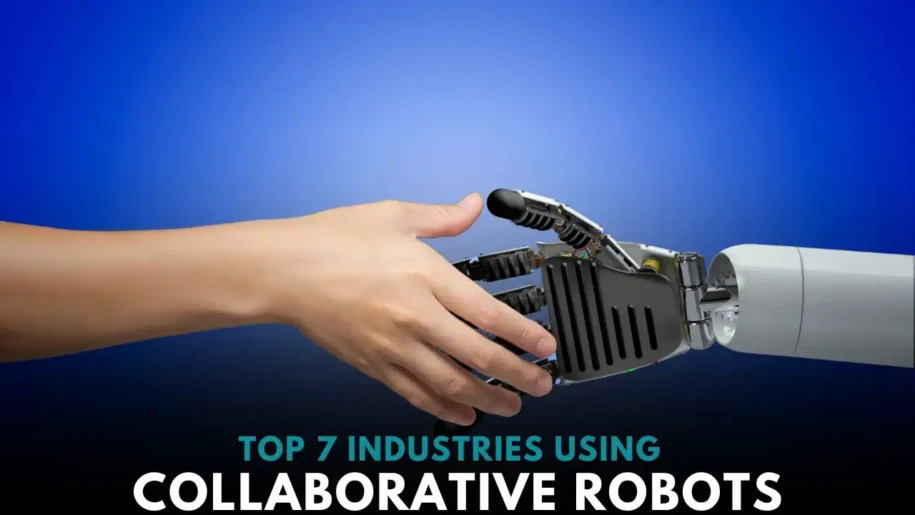Top 7 Industries Using Collaborative Robots
The Cobot Revolution I’m Witnessing Firsthand
Last month, I visited a manufacturing plant in Cincinnati that completely changed my perspective on collaborative robots. The plant manager, Teresa, was Replica Omega Seamaster showing me around when we stopped at a workstation where a human operator was working side-by-side with what looked like a mechanical arm.
“Three years ago, we couldn’t keep this line staffed,” Teresa cartier Replica told me. “Now this single operator and cobot handle what used to require three people replica watches uk working shifts, and our quality metrics have never been better.”
This isn’t an isolated case. Over the past two years, I’ve toured dozens of facilities across different industries where collaborative robots—or cobots—are transforming operations in ways that traditional automation never could.
Unlike conventional industrial robots that work behind replica omega safety cages, these collaborative machines are designed to work alongside humans, complementing our skills rather than replacing them entirely. As someone who’s been covering industrial technology for over a decade, I believe we’re witnessing a fundamental shift in how humans and machines interact in the workplace.
What Makes Cobots Different? I Asked the Experts
“People confuse cobots with traditional robots all the time,” explained Dr. Sarah Williams, robotics engineer at the Institute for Human-Machine Collaboration, when I interviewed her last week. “The key difference isn’t just safety features—it’s the entire design philosophy. These machines are built from the ground up to enhance human capabilities rather than replace them.”
During my factory visits, I’ve noticed several distinguishing features:
- Safety-first design: Force sensors that detect unexpected contact and immediately stop movement
- Intuitive programming: I watched a production supervisor with no coding background reprogram a cobot in less than 15 minutes
- Adaptable deployment: Unlike fixed automation systems that require major facility overhauls
- If you like forever classic fake watches, you cannot miss the uk top quality cheap replica omega watches USA.
But enough theory—let’s explore the seven industries where I’ve seen cobots making the biggest difference.
1. Manufacturing: Where It All Started

I’ll never forget walking into Precision Parts Inc. in Detroit last year. The owner, Mike Johnson, had been struggling with labor shortages for years. “We were turning down orders because we couldn’t staff second shift,” he told me as we walked past a row of CNC machines.
Each machine now had a UR10 cobot tending it—loading raw materials and unloading finished parts. What struck me wasn’t just the technology, but how the human operators had adapted. One machinist, Dave, who’d been with the company for 22 years, showed me how he’d modified the cobot’s gripper himself to better handle their specific parts.
“I was worried these things would take my job,” Dave admitted. “Turns out they just take the parts of my job I hated—the repetitive stuff that was killing my shoulders and back.”
The results speak for themselves. Mike showed me their productivity numbers before and after cobot implementation:
- 43% increase in parts produced per shift
- 67% reduction in quality defects
- 22% improvement in on-time deliveries
What’s particularly interesting is how manufacturers of all sizes are getting in on the action. While touring a small custom furniture workshop in North Carolina, I met a team of just five craftspeople using a cobot for finish sanding—a task that previously caused frequent repetitive strain injuries.
2. Automotive: Not Just for the Giants

The automotive industry has been using industrial robots for decades, but cobots are changing the game in ways I didn’t expect.
When I visited a Toyota plant last fall, I assumed cobots would be handling the heavy lifting. Instead, I found them doing something far more interesting: working with humans on complex interior assembly tasks.
“Traditional robots can’t handle the variability in our customization options,” explained Carlos Mendez, the plant’s automation specialist. “But with cobots, we can have humans managing the complex decisions while the cobots handle precise, repetitive movements.”
Carlos showed me a station where workers were installing dashboard components with the help of a cobot that precisely held pieces in place while the human secured connections. “Before this setup, we had a 4% defect rate due to misalignment. Now it’s below 0.5%,” he told me.
But here’s what really surprised me: it’s not just the automotive giants benefiting from cobot adoption. During a recent trip to a tier-two supplier in Michigan that makes brake components, I saw how a small team was using three cobots to compete with much larger companies.
“The big guys have massive automation budgets,” the operations manager told me. “We had to get creative. These cobots cost us a fraction of what traditional automation would, and we can redeploy them as our contracts change.”
3. Healthcare: Far Beyond the Operating Room

If there’s one industry where I’ve seen cobots making unexpected inroads, it’s healthcare. And no, I’m not just talking about surgical robots.
Last winter, I spent a week observing operations at Memorial Hospital in Chicago. In their pharmacy department, I watched a cobot methodically filling prescriptions alongside pharmacy technicians.
“Medication errors dropped by 92% after we implemented this system,” pharmacy director Dr. Helen Park told me. “Plus, our technicians now spend more time counseling patients instead of counting pills.”
Down in the laboratory, another cobot was handling the repetitive task of loading and unloading centrifuges. Lab manager Tim Rodriguez shared an insight I hadn’t considered: “Besides the efficiency gains, there’s a major biohazard benefit. The cobot doesn’t get tired, doesn’t get distracted, and won’t accidentally expose itself to dangerous samples.”
The applications go beyond these examples. During a medical conference in Boston, I tried a rehabilitation device that used cobot technology to provide consistent therapy for stroke patients. The physical therapist demonstrating it, Alisha Johnson, told me: “The key advantage isn’t replacing therapists—it’s allowing us to work with multiple patients simultaneously while maintaining therapy consistency.”
I’m personally most excited about the emerging applications in elder care. During a recent visit to a nursing facility in Phoenix, I observed a pilot program where cobots were assisting nurses with patient lifting and repositioning tasks—reducing staff injuries while making patients feel more secure.
4. Electronics: Where Precision Meets Flexibility

“If you want to see cobots in their element, visit an electronics manufacturing facility,” advised automation consultant Wei Zhang when I interviewed him for this article. Taking his advice, I toured three electronics plants across the Southwest last month.
At MicroTech Solutions in Austin, I observed something remarkable: a production line making smart home devices that changes over to new product variants multiple times per day. Technical Director Samantha Murphy walked me through their setup.
“Before cobots, changeovers took us 45 minutes to an hour,” Samantha explained, showing me their six collaborative robots that handle delicate component placement. “Now we’re down to less than 15 minutes. In this business, that flexibility is everything.”
What struck me was the precision involved. I watched as a cobot picked up microchips barely visible to the naked eye and placed them with perfect accuracy on circuit boards—all while a human operator handled quality checks and managed exception cases.
But implementation hasn’t been without challenges. At another facility in San Jose, an operations manager candidly shared their struggles: “The vendor claimed it would be plug-and-play, but integration with our legacy systems took three months longer than planned. The ROI is there now, but those first few months were rough.”
This kind of nuanced perspective rarely appears in the glossy marketing materials from robotics companies—which is why I make a point of asking about challenges during my site visits.
5. Food & Beverage: Breaking New Ground

The food industry presents unique challenges for automation—variables like irregular shapes, delicate products, and strict hygiene requirements have historically limited robot adoption. But that’s changing, and I’ve seen some fascinating applications over the past year.
During a visit to Pacific Coast Brewing, I watched cobots handle an unexpected task: quality control for their bottling line. “Consistency is everything in craft brewing,” head brewer Jennifer Tate told me. “Our cobot inspects fill levels and cap seals more reliably than human inspectors, especially toward the end of long shifts.”
The brewery had wrapped their cobot’s joints in food-grade coverings that can withstand the washdown procedures required in food production. This attention to detail made all the difference for their application.
But perhaps the most innovative food application I’ve seen was at Sunrise Bakery in Denver, where cobots were decorating cakes alongside human pastry chefs. Owner Marcus Williams demonstrated how they programmed consistent decorative patterns while the human bakers focused on custom details and artistic elements.
“Our bakers were skeptical at first,” Marcus admitted. “But now they’ve actually created custom tools for the cobots. The quality is more consistent, and our decorators’ hands and wrists aren’t burning out from repetitive piping.”
What I found particularly clever was their solution to a common challenge: the variability of food products. They’d added a simple vision system that allowed the cobot to adjust to slight differences in cake sizes and positions—a problem that had stumped earlier automation attempts.
6. Logistics & Warehousing: The E-Commerce Game Changer

If you’ve ordered anything online recently (and who hasn’t?), chances are a cobot might have helped fulfill your order. The explosion of e-commerce has created enormous pressure on warehousing operations—a perfect storm that’s driving cobot adoption faster than almost any other sector.
When I visited FullSpeed Logistics outside of Atlanta last quarter, I experienced what operations manager Rick Torres called “the cobot difference.” Walking through their massive distribution center, I saw collaborative robots working alongside human pickers in a remarkably fluid dance.
“Before implementing cobots, our pickers would walk 12-15 miles per day,” Rick told me. “Now they stay in zones while the cobots bring shelves to them. Productivity is up 34%, but more importantly, worker injuries are down 71%.”
What fascinated me was watching the real-time problem-solving. When an unusual package caused a brief stoppage, I expected lengthy downtime. Instead, the floor supervisor made an adjustment to the cobot’s program in under five minutes, and operations resumed.
But logistics applications go beyond picking. At another facility in New Jersey, I observed cobots handling parcel sorting with a level of adaptability that traditional automation can’t match.
“Our package mix changes constantly,” the facility manager explained. “During back-to-school season, we handle mostly flat packages. During holidays, it’s all odd shapes and sizes. The cobots adapt to whatever comes down the line without major reprogramming.”
I’ve also seen smaller operations benefit. A boutique fulfillment center in Portland showed me how they use just two cobots to compete with much larger operations, shifting them between picking, packing, and sorting tasks as demand fluctuates throughout the day.
7. Education & Research: Building the Future Workforce

My journey exploring collaborative robotics has taken me to some unexpected places, but university robotics labs have offered some of the most inspiring examples of cobot applications.
Last semester, I spent a day at Georgia Tech’s Collaborative Robotics Research Center, where students were working on projects that went far beyond typical industrial applications. Professor Maria Gonzalez showed me around the lab.
“What makes cobots ideal for education is the safety factor,” she explained as students worked directly with various robot models. “Students can program and interact with these machines without the safety barriers required for traditional industrial robots.”
I watched as a team of engineering students modified a cobot to assist people with limited mobility. Their project wasn’t perfect—the gripper sometimes struggled to pick up lightweight objects—but the learning process was invaluable.
“In industry, failure is expensive,” one student told me. “Here, we can try things that might not work and learn from the process.”
Beyond technical skills, what struck me was how these students were developing a comfort level with human-robot collaboration that will serve them well in tomorrow’s workforce. As Maria put it: “We’re not just teaching robotics; we’re preparing students for a workplace where collaboration with intelligent machines will be commonplace.”
Community colleges are getting in on the action too. During a visit to Riverside Community College in California, I saw how their manufacturing technology program had incorporated cobots into the curriculum. Students who might never have considered careers in automation were gaining hands-on experience that local employers value highly.
“We can’t graduate students fast enough,” the program director told me. “Local manufacturers call us weekly looking for people with cobot programming experience.”
Is Your Business Ready for the Cobot Revolution?
As I reflect on all the facilities I’ve visited, one thing becomes clear: companies succeeding with cobots aren’t just buying technology—they’re rethinking how humans and machines can complement each other.
Are you struggling with the same challenges I’ve heard about from businesses across these industries? Labor shortages? Quality inconsistencies? Flexibility limitations? If so, collaborative robots might be worth exploring—though I’m always quick to tell people they’re not a quick fix or suitable for every situation.
The most successful implementations I’ve seen share a common approach: starting small, focusing on specific pain points, and involving frontline workers in the process from day one.
What’s your experience with cobots been like? Have you seen them in action or considered them for your operation? I’d love to hear your thoughts and questions—and maybe even visit your facility for a future article on this fascinating technology that’s reshaping how we work.



Leave a Reply